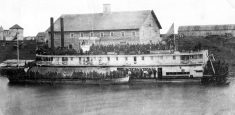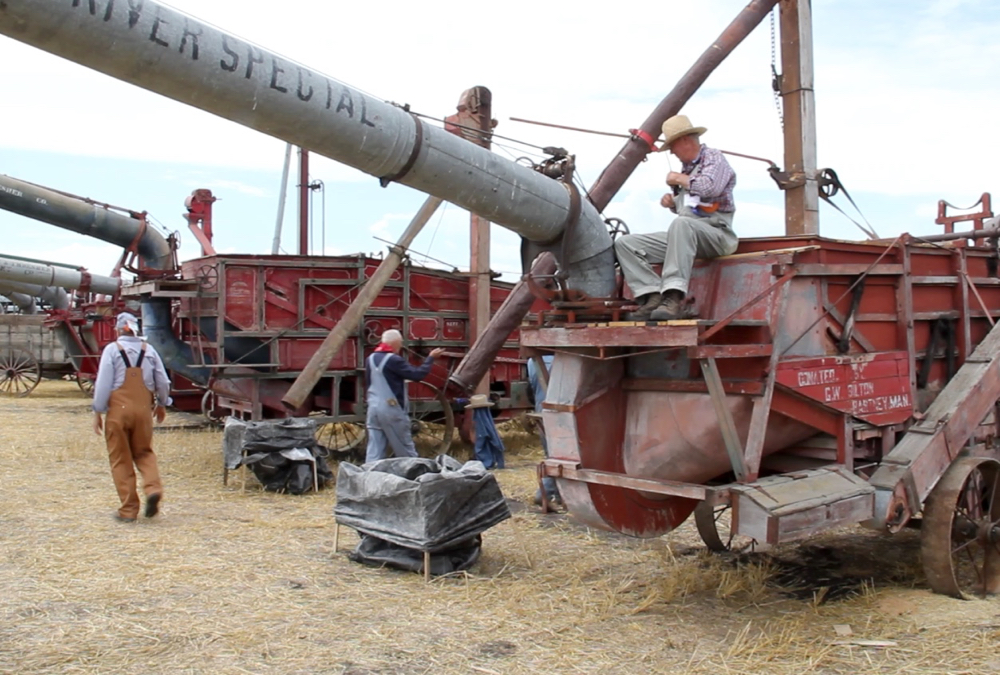In the recent Manitoba Agricultural Museum article on the practice of backsetting, which was sometimes carried out when breaking virgin sod, the use of a plank drag in subsequent field operations was mentioned.
A plank drag was somewhat more complicated than merely dragging a plank across the field and so deserves some further explanation. Seager Wheeler, who wrote the book Profitable Grain Growing, thought the plank drag was important enough that he devoted a chapter in his book to the uses of a plank drag.
Read Also

Reaction rolls in on Health Canada dicamba restriction proposal
Spray expert says proposed dicamba rule change would ban ‘over the top’ use of the herbicide
He describes in detail the plank drag he was using in 1919. He built this drag using two 2×8 planks eight feet long set on edge, one running behind the other. The trailing plank did not run exactly behind the leading plank but rather was offset to the left of the leading plank by one foot. The two planks were separated by three feet. Three 2x6s three feet long were mortised into the drag planks near the top edge of the 2×8 drag planks. One of these pieces went in the middle and the other two pieces at the ends of the drag planks. Boards were then nailed across the tops of these pieces in order to provide a place where the driver could stand.
In addition, two iron or steel rods running between the 2x8s were used to hold the entire assembly together. A chain threaded on to these rods was used as a hitch to the team pulling the drag. The rods had to be high up on the drag planks to result in the team’s pull coming onto the top edge of the plank which better allowed the soil to move along the front edge.
The draw chain should have the clevis fastened to it so that the right side of the chain is shorter than the left side resulting in the drag being drawn at an angle of about 40 degrees while it was working. Any steeper angle than this angle resulted in the drag pulling sideways. With a 40-degree angle, soil was again encouraged to move along the front edge of the drag.
The plank drag crushed lumps, shaved off humps in the field and filled in light depressions. Just as importantly, when used properly a plank drag could fill in the dead furrows left by plowing. Wheeler points out that a smooth surface on a field resulted in the field equipment of the time operating more consistently.
For example, if the small wheel on the end of the table of a grain binder met any small obstruction in the field, the binder would swing somewhat, which would then result in the grain coming onto the table on an angle resulting in ragged sheaves which posed problems in stooking. A smooth-running binder produced neat and compact sheaves. Seed drills also benefited from a smooth surface as depth was more easily maintained and the feed of seed was more regular. Seed drills at that time were ground driven off the end wheels and if the wheels were being bounced around this resulted in the mechanism dropping the seed operating in a jerky and less regular manner.
One has to remember in the age of horse-drawn equipment farmers wanted light-running equipment as this type of equipment would be less tiring to the horses pulling the equipment which meant the farmer could cover more ground before the team became exhausted for the day. However, a side-effect of light-running equipment was that it was more sensitive to field conditions.
The Manitoba Agricultural Museum is open year round and operates a website which can provide visitors with information on the museum and the reunion including location and hours of operation.















